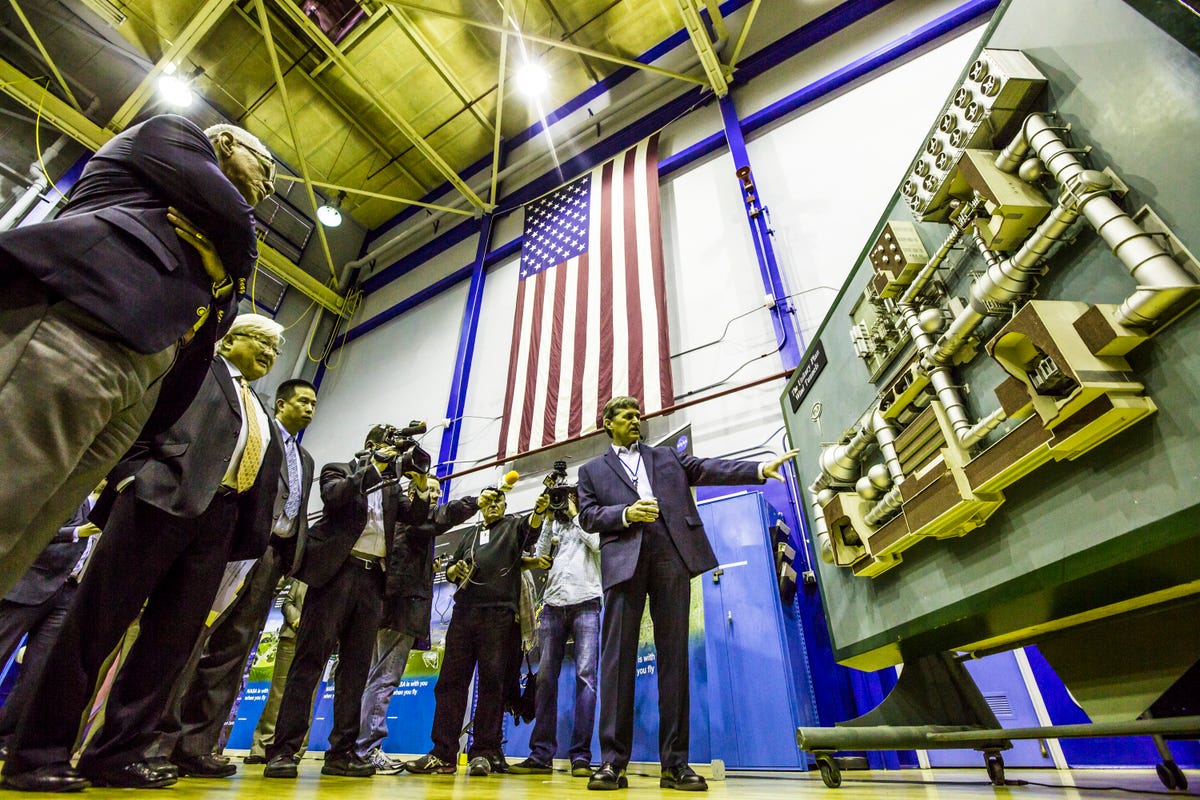NASA's design for a next-generation aircraft
NASA showed CNET a trussed-wing commercial aircraft design that aims to be faster and more fuel efficient than current aircrafts.

A glimpse of the future
The American space agency NASA gave reporters a glimpse of the future of commercial air travel from inside 11-by-11 foot Transonic Wind Tunnel last week at the NASA Ames Research Center in Mountain View, Calif.
The space agency expects that twice as many people will be hopping on airplanes by 2030. That means more fuel consumption, more noise in urban centers, and more carbon emissions -- unless planes get a serious upgrade.
Inside the 11-by 11-foot wind tunnel
Everything that has ever flown at NASA has been tested inside the wind tunnels at NASA Ames Research Center in Mountain View, Calif.
Here, we are inside the 11-by-11-foot Transonic Wind Tunnel at NASA Ames, which operates at wind speeds from Mach 0.20 to 1.45.
Code named SUGAR
The Boeing-designed aircraft project is code named SUGAR (Subsonic Ultra-Green Aircraft Research) and works to help conceive of future airplane technologies that will meet higher fuel efficiency marks.
Trussed wing design
An all-white, 4-foot-long, 4 percent scale model plane with higher-than-usual truss-braced wings is suspended in the wind tunnel at NASA Ames Research Center in Mountain View, Calif., where just last month NASA first began testing its design.
Next-gen prototytpes
Second generation beyond current technology models and Quiet Experimental Validation Concepts (QEVC) shown at NASA Ames have been tested in the wind tunnels here at NASA to study and reduce the sonic booms in commercial supersonic transport.
A closer look at what's next
Members of the press stand in side the 11-by-11-foot wind tunnel at NAS Ames listening to NASA's Nateri Madavan describe some of the capabilities and advantages of wind tunnel design tests.
NASA Administrator Charles Bolden
NASA Administrator Charles Bolden visited the agency's Ames Research Center at Moffett Field on February 18, 2016, to view advanced aeronautic concepts for green aviation.
A revolutionary airplane
"This particular airplane...could knock the socks off of a Boeing 737," said NASA's Nateri Madavan, a project manager at Ames overseeing the plane's design. "It will cut fuel use by more than 50 percent. It will cut emissions by more than 80 percent. It'll cut noise by a factor of six. It's truly a revolutionary airplane."

